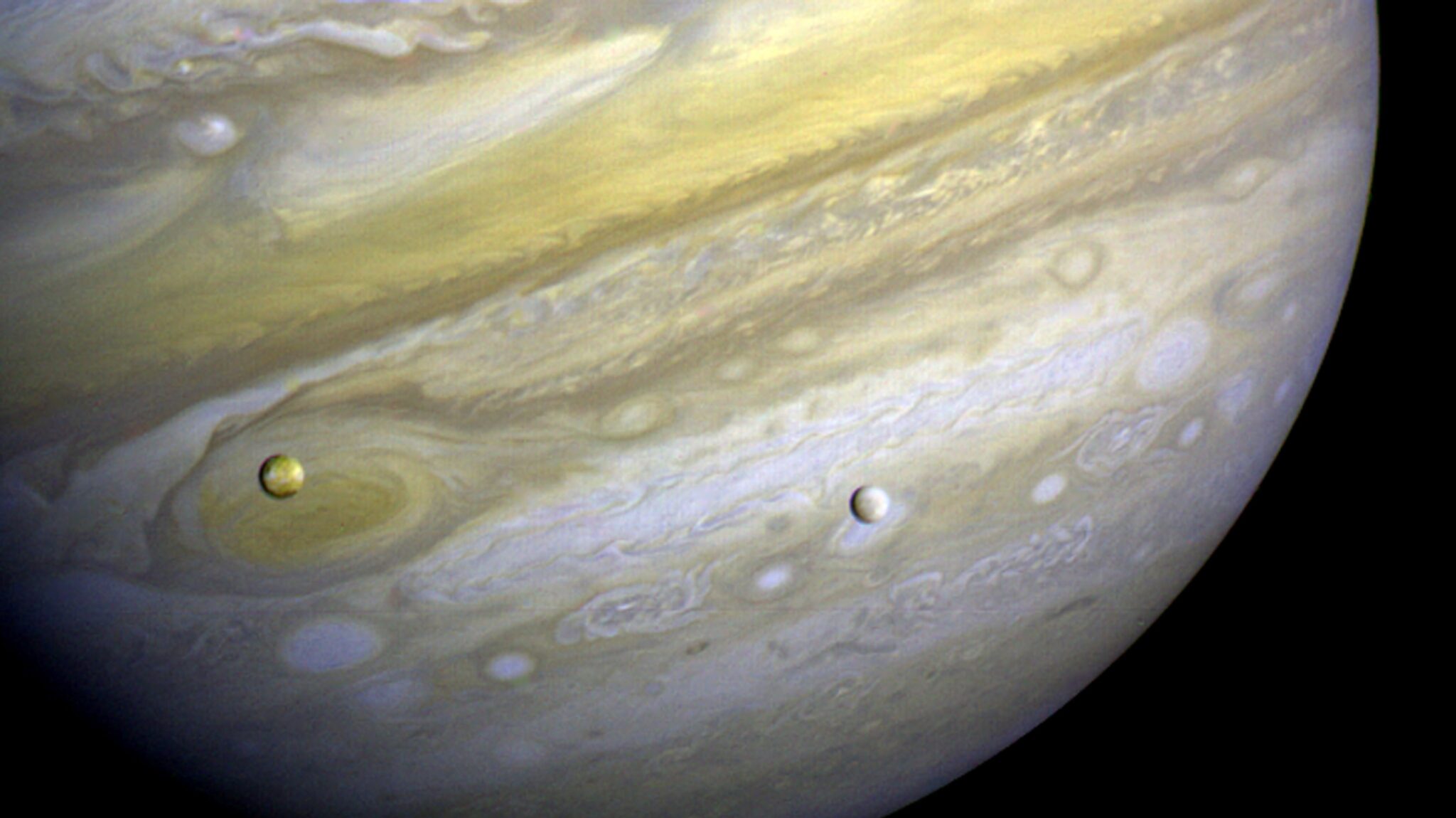In the early period of the existence of the Solar System, young Jupiter warmed up and gradually dried its moon Io. In theory, the activity of the planet could also affect the evaporation of water in Europa and Ganymede. Planetologist Carver Bierson announced his hypothesis on March 17 at a conference on the Study of the Moon and Planets. If the hypothesis is confirmed, the results can help researchers narrow down the search for icy exomoons by eliminating unlikely orbits.

Jupiter is easy enough to find in the night sky, it is one of the brightest points. But studies showed that billions of years ago Jupiter was 10 thousand times brighter. Its radiance influenced the young moons of the planet: Ganymede, Callisto, Io and Europa. The structure of these four bodies follows a trend: the farther a moon is from Jupiter, the more its body is rich in ice.
Bierson and his colleagues suggested that this model was a legacy of Jupiter’s past aurora. The team used computer simulations to determine how young Jupiter could “fry” its moons, starting with Io – the closest of the four. According to Bierson, during the first few million years, Io’s surface temperature could exceed 26°C due to Jupiter’s radiance. And these are comfortable Earth temperatures.
Any ice that was on Io at that time – about 4.5 billion years ago – would probably have escaped into the atmosphere. This atmosphere, barely restrained by the weak gravity of the moon, would easily fly into space. In just a few million years, Io could lose 25 times more water than in Earth’s oceans.
Earlier we reported everything you wanted to know about Jupiter.
According to Sciencenews
Follow us on Twitter to get the most interesting space news in time
https://twitter.com/ust_magazine

